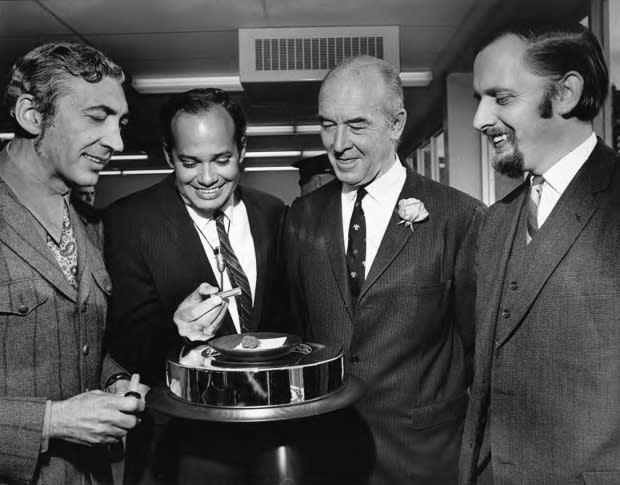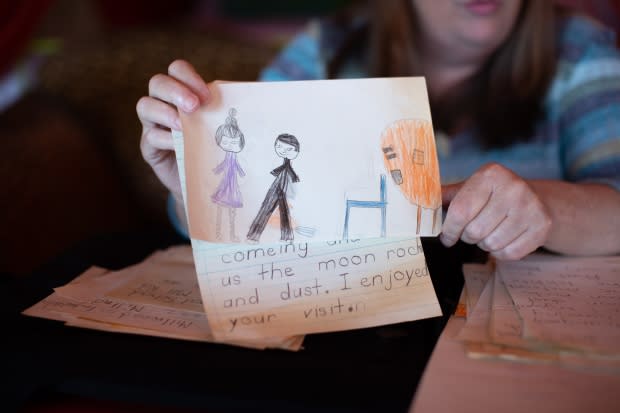'Dad, you brought me part of the moon': Children of Apollo 11 scientist recall moon landing
Fifty years ago, when the world watched in awe as astronaut Neil Armstrong took his giant leap for mankind, one family in Toronto was just excited to see Dad on television.
"I remember Apollo 11, [Dad] was at mission control and talking to the astronauts about what to pick up and what to leave behind and that was very exciting — [to see] my dad on TV ," said Susan Strangway, 57, from her home in White Rock, B.C.
Strangway, who was in Grade 2 during the historic July 20, 1969 moon landing, is the daughter of the late Canadian geophysicist David Strangway. He was one of the many thousands of people involved in NASA's efforts to put a man on the moon.
In 1969, Strangway had recently moved his family to Toronto from Boston, after taking a position at the University of Toronto, but flew down to Houston to assist with the Apollo 11 mission.
Strangway's work involved studying the rocks and samples collected from the surface of the moon. Some of that work was done at his University of Toronto laboratory.

The story of how he brought those moon rocks to his Canadian lab after the mission became family lore.
"I remember the night he came home with the moon rocks. He just had them in his luggage, like with his clothes," Strangway recalled.
When Canadian custom agents had asked him about the rocks, they thought he was making a joke and let him pass through.
Susan Strangway's younger sister, Patricia Forrest, 51, was also on the call with CBC and chimed in from Kelowna, B.C. with her own memories.
"Yeah, they asked if he had anything to declare. And he said, 'Oh just a bunch of moon rocks,'" Forrest said.
He made it home, but later that night, much to the family's surprise, customs agents showed up at their door with forms to declare his otherworldly goods.
"My parents were in the living room with the customs people and I was watching from the other room and it was all very jovial ... I mean what forms would exist about things that are not of this earth?"

Strangway brought some of the moon rocks to Susan and her older brother Richard's elementary school. Susan, who had been the new kid in class, recalled how patiently her dad answered all her classmates' questions.
"I wasn't terribly popular, and so, yeah, [after that] my popularity, I would say, was greatly heightened," Strangway laughed.
"You have to be grown up to realize the impact of what a special thing that was [for him to do]."

He later moved his family to Houston, where he was NASA's chief of the geophysics branch in the 1970s. The sisters recalled a childhood embedded in the "NASA crowd," swimming with Neil Armstrong's kids in the neighbourhood pool and being friendly with the astronauts.
"They definitely knew all the astronauts and the astronaut wives and did soirees with them and whatnot. Our mom [Alice] still talks to them," Forrest said.

Strangway had an influential career as a university administrator, eventually becoming the president of both the University of British Columbia and University of Toronto.
He passed away in 2016 at the age of 82.
Forrest says, fittingly, there was a supermoon on the night of her dad's death.
"At one point in the evening, my husband said, 'Go stand outside and look at the moon right now.' It was the most beautiful supermoon I've ever seen … and it was like the moon was saying goodbye."
Strangway said the family always thinks of their father when they look at the moon.
"I look at the moon with amazement like, 'Oh my God, Dad, you brought me part of the moon."


